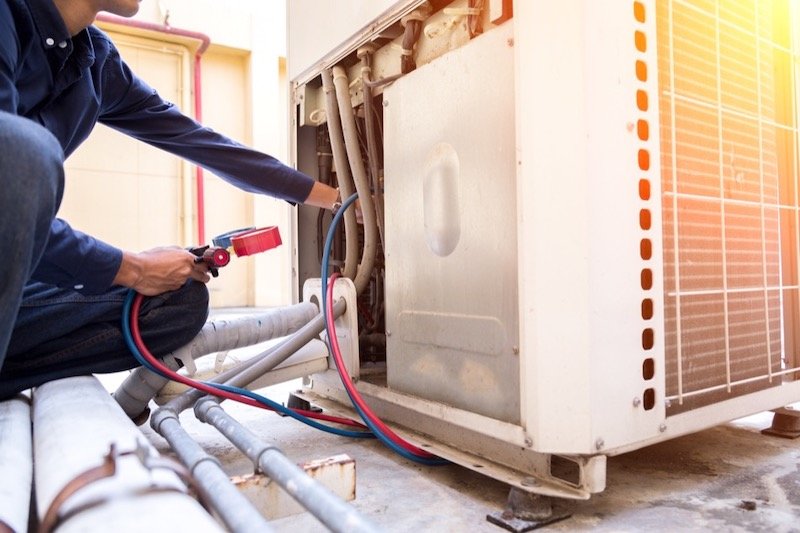

8.) Where is the heat absorbed by the thermoelectric air-to-air exchanger transferred? Under ideal conditions, a tolerance of ± 0.1 ☌ is possible. That depends on the type of control used and where the temperature is measured. 7.) How precisely can a thermoelectric air-to-air exchanger control the temperature? Unless a suitable insulation is provided, the enclosure we want to cool tends to absorb heat from the environment making cold internal temperatures difficult to achieve. Yes, but keep in mind that the cooling capacity decreases as the difference in temperature between the air inside the enclosure and ambient increases. 6.) Can a thermoelectric air-to-air exchanger reduce the temperature below that of the ambient? Contact our technical support folks for assistance as necessary.

AMERICOOL AIR CONDITIONER SERIES
To increase capacity beyond our largest 200 watt unit, additional units, can be wired in in parallel (same Voltage), or in series (typically, to a higher Voltage). See the performance curve for a particular unit to see how many watts can be extracted at a given temperature drop.Įach ElectraCOOL™ AC unit is rated for a specific number of watts or BTU/h. When cooling below ambient is desirable, the capacity in watts or Btu/hour decreases as the exchanger works to provide colder temperatures. In general, the QC max value is of most interest for users who don't require cooling but rather simply don't want the air in the enclosure to increase in temperature above ambient. This is also known as the nominal cooling capacity. The cooling capacity or QC max for our thermoelectric air conditioners describes the number of watts that can be removed from an enclosure without lowering the temperature below ambient (DT=0). 5.) How much heat can be transferred with a thermoelectric air-to-air exchanger? The warm or "hot-side" of the module is connected to another forced convection heat sink that dissipates the heat, absorbed through the cold side as well as the input power to the module/s, to ambient. The cold-side of the module is connected to a heat sink with a fan (forced convection) that absorbs heat from within the enclosure and circulates the cooled air. The heart of the system is one or more thermoelectric modules. 4.) What are the major components of a thermoelectric air-to-air exchanger? "Static" construction makes TE exchangers immune to vibration thus allowing them to be used in any orientation and makes them particularly suitable for the application on moving systems including ships, aircraft and robots and vehicles like ambulances (to keep medication compartments at temperature).Ī thermoelectric air-to-air exchanger does not contain any polluting substances such as CFC or other gases, has a more compact and simple structure than a compressor system and can be easily adapted and mounted. There are no moving mechanical parts (except fans) so thermoelectric air-to-air exchangers are extremely reliable with an almost unlimited life span and require no maintenance (except possible fan replacement). 3.) What are the advantages over a compressor-based system? Fans are used to move air over heat sinks attached to both the hot and cold sides of the thermoelectric modules. One part absorbs the heat and, as a consequence, reduces the temperature (cold-side) and the other part dissipates the heat to ambient (hot-side). Enclosed with PFC & Parallel Functions 750 - 3,000 Wattsįor equipment not making contact with a patientĢ.) How does an air-to-air exchanger work?Īir-to-air exchangers utilize the Peltier effect whereby the heat is transferred via the flow of current through thermoelectric modules.ElectraCOOL™ TCP100™ Thermoelectric Cold-Plate.ElectraCOOL™ TCP50™ Thermoelectric Cold-Plate.


 0 kommentar(er)
0 kommentar(er)
